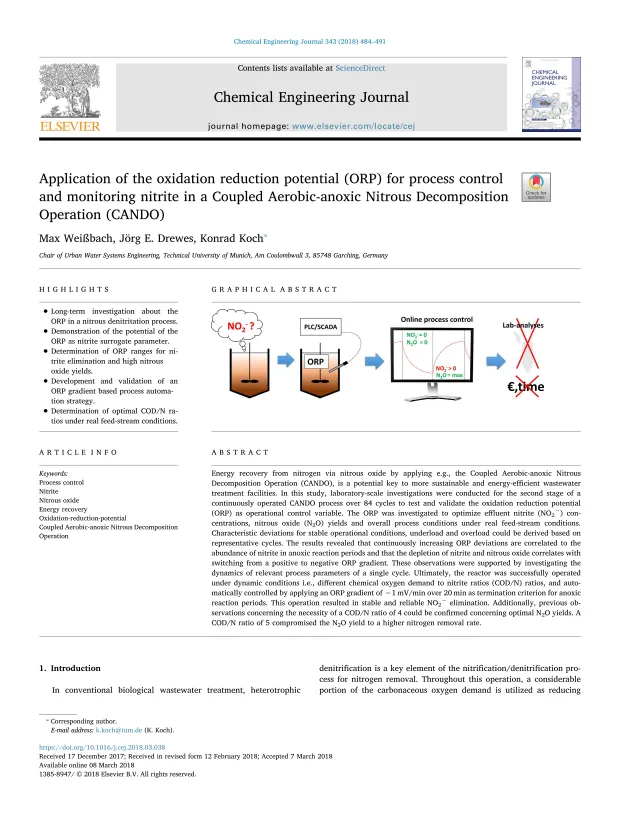Energy recovery from nitrogen via nitrous oxide by applying e.g., the Coupled Aerobic-anoxic Nitrous Decomposition Operation (CANDO), is a potential key to more sustainable and energy-efficient wastewater treatment facilities. In this study, laboratory-scale investigations were conducted for the second stage of a continuously operated CANDO process over 84 cycles to test and validate the oxidation reduction potential (ORP) as operational control variable. The ORP was investigated to optimize effluent nitrite (NO2−) concentrations, nitrous oxide (N2O) yields and overall process conditions under real feed-stream conditions. Characteristic deviations for stable operational conditions, underload and overload could be derived based on representative cycles. The results revealed that continuously increasing ORP deviations are correlated to the abundance of nitrite in anoxic reaction periods and that the depletion of nitrite and nitrous oxide correlates with switching from a positive to negative ORP gradient. These observations were supported by investigating the dynamics of relevant process parameters of a single cycle. Ultimately, the reactor was successfully operated under dynamic conditions i.e., different chemical oxygen demand to nitrite ratios (COD/N) ratios, and automatically controlled by applying an ORP gradient of −1 mV/min over 20 min as termination criterion for anoxic reaction periods. This operation resulted in stable and reliable NO2− elimination. Additionally, previous observations concerning the necessity of a COD/N ratio of 4 could be confirmed concerning optimal N2O yields. A COD/N ratio of 5 compromised the N2O yield to a higher nitrogen removal rate.
